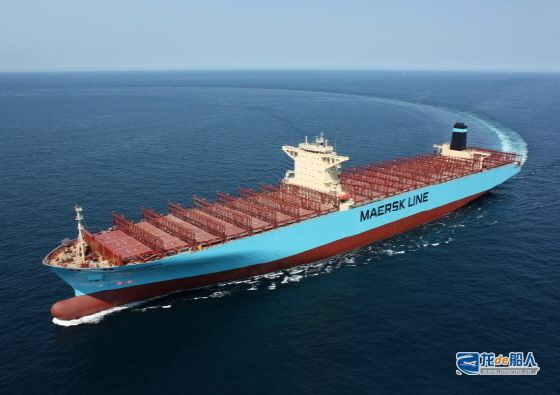Danish shipping giant Maersk’s project to build up to 12 liquefied natural gas (LNG) dual-fuel container ships is expected to be finalized as early as next month. Maersk has previously solicited prices from major shipyards in China and South Korea, and the battle for orders is about to begin in full swing.

According to TradeWinds, Maersk is accelerating its newbuilding program for 6+6 18,000 TEU LNG dual-fuel container ships. The contract value is expected to reach $2.5 billion to $2.8 billion, translating to a per-vessel cost of $208 million to $233 million. Deliveries are scheduled for 2029.
Driven by inquiries and orders for container ships from global shipping companies such as Mediterranean Shipping Company (MSC) and CMA CGM, Maersk may face additional pressure from tight shipyard capacity. Consequently, the company plans to finalize all 12 newbuild projects within the year. Contracts for the first six confirmed ships are expected to be signed next month, while options for six additional ships of the same type will be advanced before year-end.
Earlier, Maersk had solicited quotations from major Chinese and South Korean shipyards for the above-mentioned new shipbuilding projects. Chinese shipyards such as Jiangnan Shipyard, Hengli Heavy Industries, Yangzijiang Shipbuilding, and New Times Shipbuilding, as well as South Korea’s HD Hyundai Heavy Industries and Hanwha Ocean are participating in the bidding.
Reports indicate that the Chinese shipyard’s price per ship is $20 million lower than the Korean shipyard’s. Some believe that due to the significant disparity in prices between the Chinese and Korean shipyards and the large backlog of orders at Korean shipyards, the order is likely to be taken by the Chinese shipyard.
Despite the lingering uncertainty surrounding U.S. port fee policies, container ships under 20,000 TEU capacity can be redirected to European or Asian routes as needed if they cannot access U.S. ports. This development increases the likelihood of Chinese shipyards securing this major order.
Although there is still uncertainty regarding the U.S. port fee policy, container ships under 20,000 TEU that are unable to enter U.S. ports can be deployed to Europe or Asia as needed, which will increase the chances of Chinese shipyards successfully winning this large order.
Taking CMA CGM as an example, regarding Chinese ship port fees, the company announced that it has made thorough preparations. Within the 180-day grace period following the USTR’s announcement, it has implemented necessary measures to execute an adaptive contingency plan. At present, it does not plan to impose any USTR-related surcharges on shipments bound for the U.S..
Maersk has previously placed orders for up to 24 LNG dual-fuel ships with Chinese and Korean shipyards. These include six 17,000 TEU LNG dual-fuel container ships and two 9,000 TEU LNG dual-fuel container ships from Yangzijiang Shipbuilding; six 15,000 TEU LNG dual-fuel container ships from New Times Shipbuilding; and six 15,000 TEU LNG dual-fuel container ships from Hanwha Ocean with four option ship. The total value of these orders is nearly US$4 billion, with the first batch of ships expected to be delivered in 2028 and the final batch scheduled for delivery in 2030.
If all the above 12 18,000TEU LNG dual-fuel powered container ships are finalized within the year, it means that Maersk has basically completed the scheduled orders under its fleet renewal plan: a total of 60 ships have been signed for new construction/lease contracts, of which 50 are confirmed orders and 10 are option ships.


